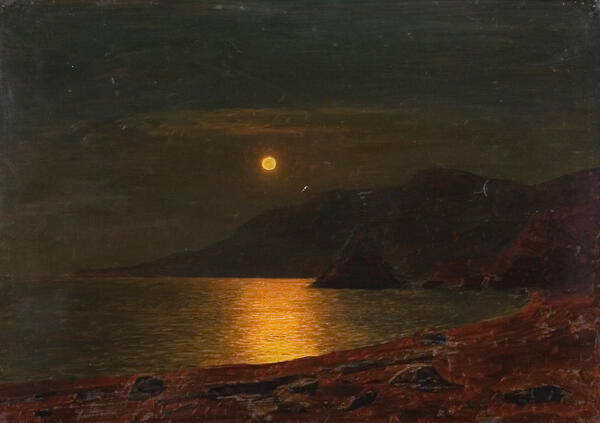The museum’s collection of Russian art, which reflects various facets of artistic culture, styles and skills, provides an opportunity for interesting art studies and generalizations.
The paintings “A Boy with a Rattle” and “Portrait of Empress Elizabeth Petrovna” were created by unknown artists of the 18th century. They are characterized by the flatness of the image, somewhat stiff poses, and exaggerated decorative elements in the depiction of clothing and interior.
The early 19th century is associated with romantic attitudes. Special warmth, sincerity and sentimentality are instilled into the “Portrait of Merchant Shilov” (1814) and the “Portrait of a Man” (early 19th century) by unknown artists, as well as the “Portrait of a Woman” by an artist from the club of Vasily Andreevich Tropinin.
In the mid-19th century, Realism flourished, especially in the genre of portrait (“Portrait of a Woman” by Fyodor Slavyansky). The exquisitely elegant “Portrait of a Lady in Black” by Konstantin Makovsky stands out in the women’s gallery of images.
The 19th century is the heyday of landscape painting. Profound sincerity, simplicity of the motif, interest in transitional states of nature, the cohesive color palettes, and the emotional mood of chiaroscuro — all this characterizes the Russian school of landscape painting.
A special section of the collection consists of paintings by artists who worked at the turn of the 20th century and were members of various artistic associations. These are Konstantin Korovin, Sergei Vinogradov, Mikhail Yakovlev, Osip Braz, Petr Petrovichev, Nikolay Dubovskoy, and other famous painters.
The museum also houses a unique exhibit “Bust of Emperor Alexander I”, made at the Imperial Porcelain Factory and awarded a gold stamp, indicating that it was an exemplary sculpture that should be used as a reference.
Decorative and applied art is represented by the works of bone-carvers, as well as by porcelain products of prominent factories.
The paintings “A Boy with a Rattle” and “Portrait of Empress Elizabeth Petrovna” were created by unknown artists of the 18th century. They are characterized by the flatness of the image, somewhat stiff poses, and exaggerated decorative elements in the depiction of clothing and interior.
The early 19th century is associated with romantic attitudes. Special warmth, sincerity and sentimentality are instilled into the “Portrait of Merchant Shilov” (1814) and the “Portrait of a Man” (early 19th century) by unknown artists, as well as the “Portrait of a Woman” by an artist from the club of Vasily Andreevich Tropinin.
In the mid-19th century, Realism flourished, especially in the genre of portrait (“Portrait of a Woman” by Fyodor Slavyansky). The exquisitely elegant “Portrait of a Lady in Black” by Konstantin Makovsky stands out in the women’s gallery of images.
The 19th century is the heyday of landscape painting. Profound sincerity, simplicity of the motif, interest in transitional states of nature, the cohesive color palettes, and the emotional mood of chiaroscuro — all this characterizes the Russian school of landscape painting.
A special section of the collection consists of paintings by artists who worked at the turn of the 20th century and were members of various artistic associations. These are Konstantin Korovin, Sergei Vinogradov, Mikhail Yakovlev, Osip Braz, Petr Petrovichev, Nikolay Dubovskoy, and other famous painters.
The museum also houses a unique exhibit “Bust of Emperor Alexander I”, made at the Imperial Porcelain Factory and awarded a gold stamp, indicating that it was an exemplary sculpture that should be used as a reference.
Decorative and applied art is represented by the works of bone-carvers, as well as by porcelain products of prominent factories.
Exhibits are marked with AR stickers for identification purposes.

